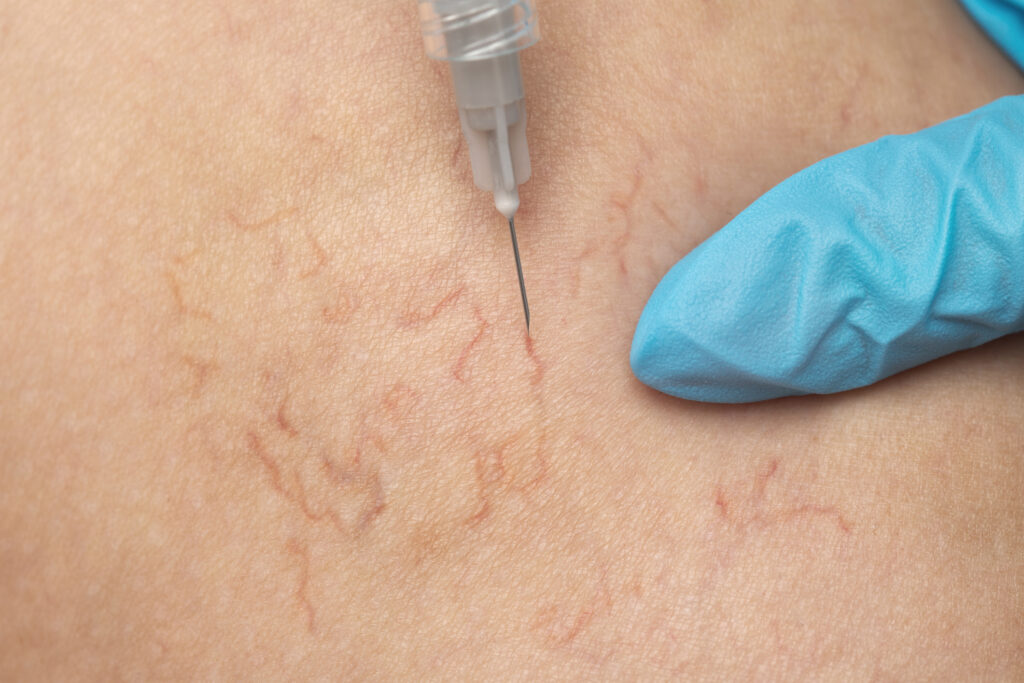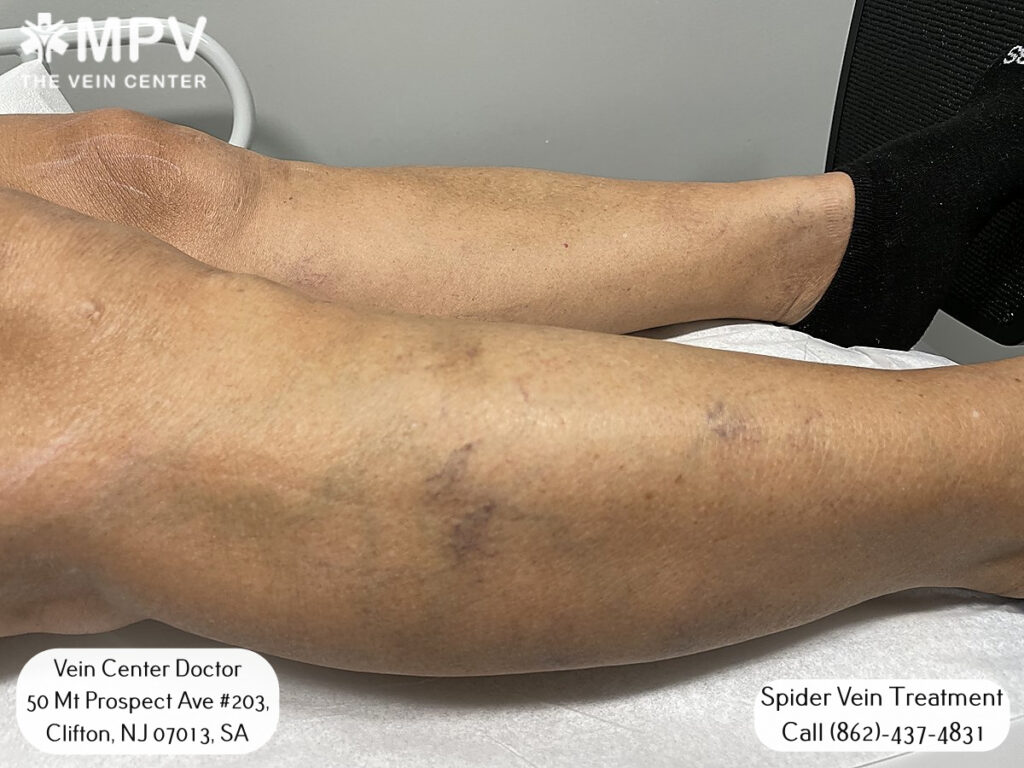Spider veins developing around the breasts are extremely common during pregnancy, affecting up to 70% of expectant mothers to some degree. This is because pregnancy hormones like progesterone cause the veins in the pelvic region and lower extremities to relax.
Combined with increased blood volume and pressure from the growing uterus, this makes spider veins more likely to emerge or worsen. Near the breasts, this is largely due to major circulation routes like the superficial epigastric veins becoming strained under the new physical demands.
Living with unwanted veins is a thing of the past, when you can simply schedule a free consultation with Vein Center Doctor and find your ideal solution today.
Genetics also plays a role - if a woman's mother or sister experienced prominent spider veins while pregnant, she has a higher chance.
However, even women without a family history can still be affected by this temporary yet frustrating condition. The good news is that for the vast majority, any spider veins or visible vessels near the breasts typically fade considerably postpartum once the body readjusts to its non-pregnant state.
The timeline for when spider veins around the breasts may first appear during pregnancy can vary somewhat from woman to woman. However, here are some general guidelines:
Of course, individual body composition and prior pregnancies can alter this timeline slightly. But generally, most begin to notice the first clear spider veins in the breast area within the latter half of the second trimester onwards.

Yes, for many women, spider veins near the breasts do often worsen as pregnancy advances further along. here are some key points on their progression:
In the early to mid-second trimester when they first appear, spider veins may be sparse and faintly visible. Towards the end of the second trimester and during the third, the relaxed endothelium allows more corkscrew-like vessels to protrude outward.
With increasing weight, volume overload, and abdominal pulsation from the uterus, the vessels stay engorged and take on a darker tone.
By the time a woman reaches full term, spider veins may have multiplied noticeably and spread into a weblike cluster under each breast. Carrying multiples increases intravenous pressure even more, accelerating their darkening and expansion earlier on average.
Posterior breast veins running down the back are also stretched out gradually by the heavy mammary glands they support. Rarely, very severe cases may develop cloaked, complex groupings of intricately coiled vessels by delivery.
However, even prominent late-stage spider veins typically regress substantially in caliber after birth. Plus, proper support during and following pregnancy can help limit their exacerbation to a degree.
No, spider veins themselves do not generally pose a serious danger during pregnancy. While they may appear unsightly, in most cases spider veins near the breasts are a benign, temporary condition caused by normal vascular alterations under hormonal influence. Some key points regarding their safety:
Spider veins do not directly put stress on the heart or impact blood flow, unlike larger varicose veins deeper in the legs. They are unlikely to rupture or cause long-term skin damage, as long as proper compression is used if particularly bulging.
Spider veins do not raise the risk of blood clots like deep vein thrombosis, a rare but possible pregnancy complication. Their appearance is merely cosmetic and does not reflect poor health of mother or baby in the vast majority.
However, in a small percentage of high-risk cases, severe exacerbation could potentially indicate an underlying issue:
Overall, mild-moderate spider veins require no special intervention. But seeing an OB-GYN is prudent if suspected preexisting conditions exist or symptoms arise beyond mere visibility under the skin. Compression garments too can help prevent unnecessary concern or feelings of vulnerability in the pregnant woman.

Spider veins around the breasts might recur with future pregnancies after initially appearing in one pregnancy, here are a few things to note:
For most women, the veins do tend to come back, especially if very prominent originally. This is because the endothelial lining remains sensitized even after the initial hormonal surge.
However, return is not guaranteed. If veins were minor in the first pregnancy, chances lessen of repeat visibility later on. Genetics still influence vulnerability.
Recurrence often happens earlier in subsequent terms, e.g. mid-second trimester versus late third, since the veins don't need as much stress to resurface.
Appearance may be less severe even if recurring, as vessels are stretched out already to some degree from the first time. Multiple gestations virtually ensure reappearance as pressure accumulates rapidly.
Factors like older age, extra weight gain, family history or medical issues like thrombophilia may worsen likelihood of relapsing veins. There is still much variability between women. Some may only experience minor touch-ups in subsequent pregnancies.
So in summary - yes, a predisposition does exist, but recurrence is not an absolute. Supportive self-care and postpartum vessel recovery also influence long term outcomes. The good news is they should fade once more after breastfeeding is complete.
Find exactly what you need to get rid of your vein-related problems. Dr. Sood and the rest of our team at Vein Center Doctor are ready to help: schedule your free consultation today.
Most Insurance is accepted for treatment